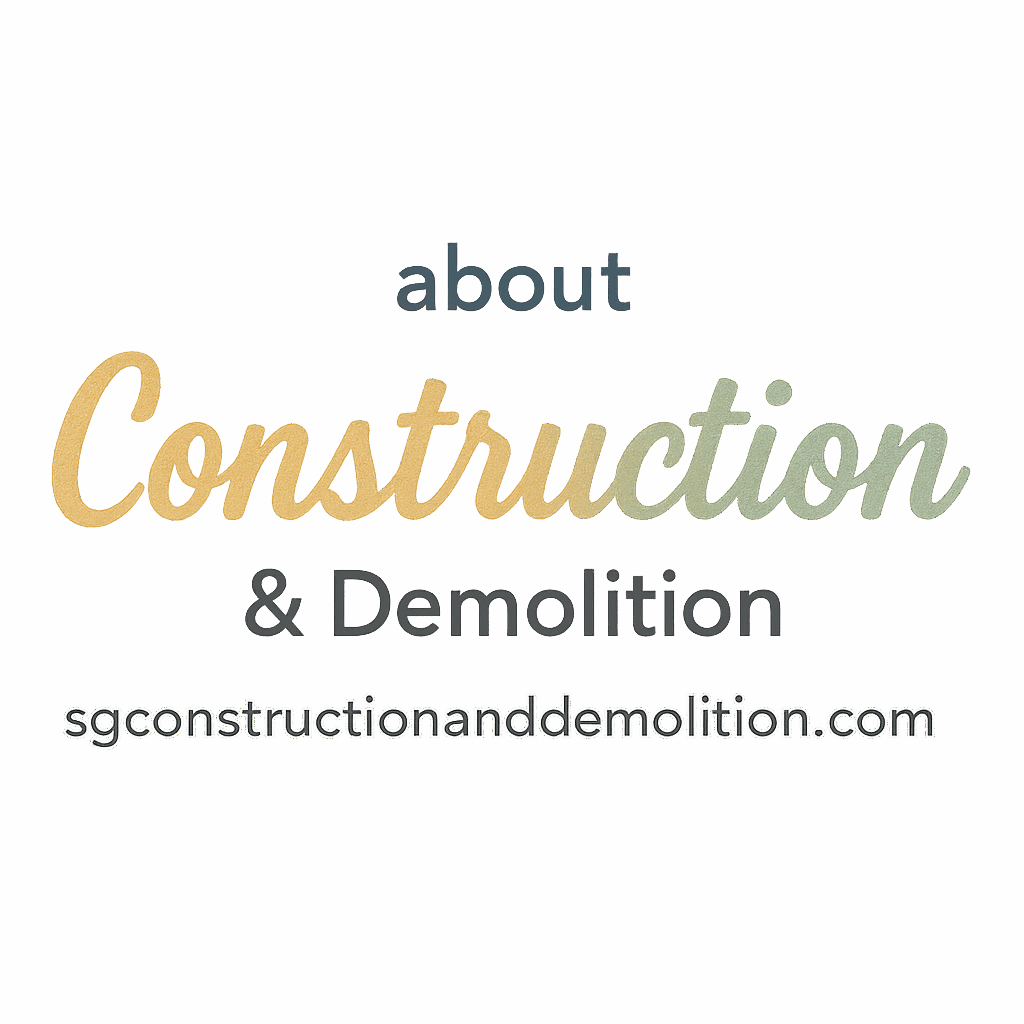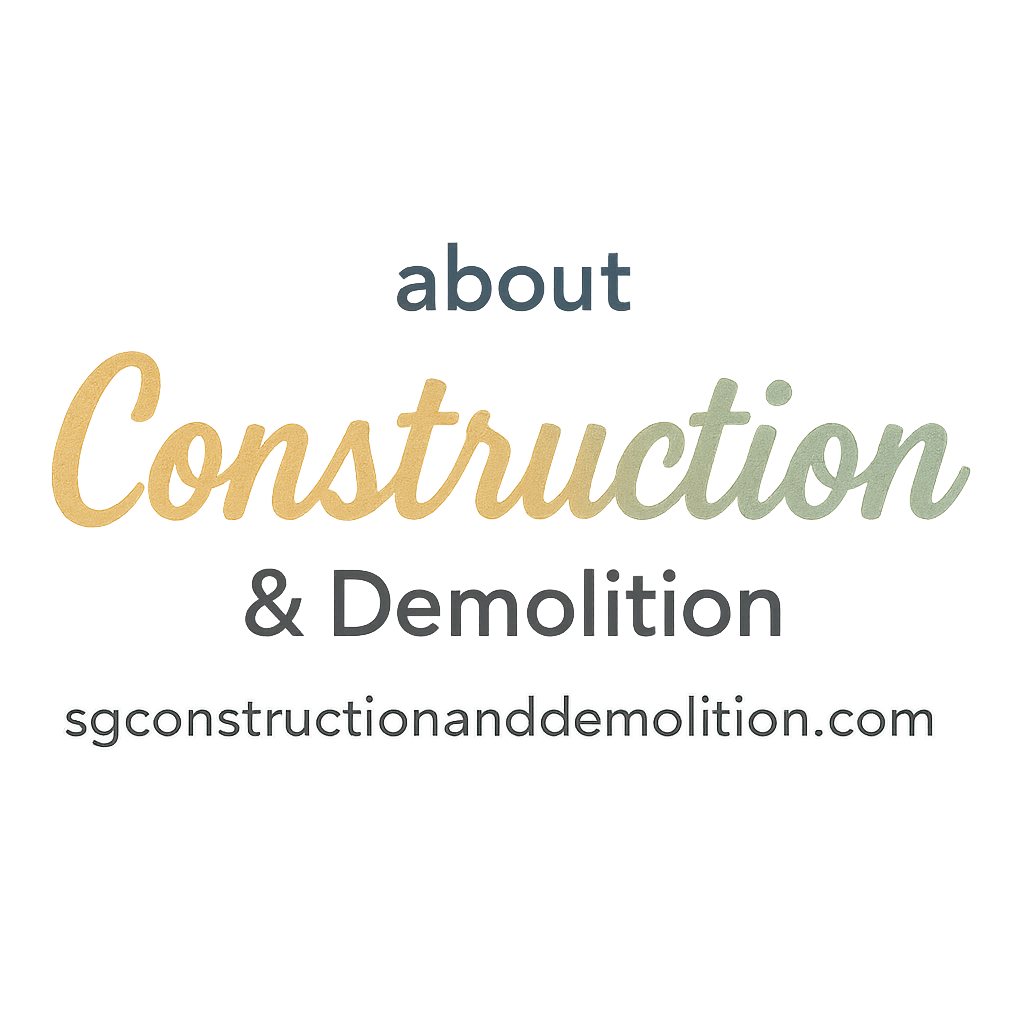Introduction
Demolition is often seen as the easy part of construction—just knock things down and clear the site, right? Wrong. Demolition is just as complex and critical as any other phase of a project. In fact, one wrong move during demolition can delay your entire construction timeline by days, weeks, or even months. If you’re not careful, these demolition mistakes can cost you time, money, and even your reputation.
So let’s break down the 10 most common demolition mistakes that can delay construction, and more importantly, how to avoid them.
1. Skipping the Initial Site Inspection
Why Site Assessments Matter
Before you bring out the sledgehammers or wrecking balls, a thorough site inspection is a must. Overlooking this step is like walking blindfolded into a minefield. You won’t know what you’re dealing with—hidden materials, unstable structures, or even protected elements.
According to best practices found in Construction Basics, the initial assessment helps you understand what you’re demolishing, what’s beneath the surface, and how to approach it safely.
How to Do It Right
Hire experienced engineers or demolition consultants to walk the site with you. Make sure to document everything—from utility lines to historical artifacts.
2. Ignoring Permit and Legal Requirements
The Legal Side of Demolition
Demolition without permits is a lawsuit waiting to happen. Municipalities require specific permits for demolition, and without them, your project can be shut down before it begins.
You’d be shocked how many people still miss this. The team at SG Construction and Demolition frequently emphasizes that proper paperwork is your project’s foundation.
Common Permit Oversights
- Forgetting to notify utility companies
- Skipping environmental assessments
- Failing to check zoning laws
Don’t let a missing signature derail your schedule.
3. Underestimating Hazardous Materials
Asbestos, Lead & Other Dangers
Asbestos, lead paint, and mold can stop demolition in its tracks. These materials require licensed professionals for safe removal. Failure to detect them early can lead to major health violations and project shutdowns.
For more on demolition safety, visit the Planning & Safety section of our partner site.
How to Handle Them Properly
Order environmental testing early. If hazardous materials are found, schedule abatement before demolition begins. Yes, it adds to the budget—but it saves you from massive fines and timeline disasters.

4. Poor Demolition Planning
Planning Prevents Problems
Some contractors assume they can plan as they go. That’s a major red flag. A proper demolition plan outlines every phase of the project, timelines, required tools, crew responsibilities, and safety measures.
Without a clear demolition strategy, you’re basically hoping for the best.
Resources You Should Be Using
Use planning templates and checklists from platforms like SG Construction and Demolition’s Project Management tag. These resources can save you hours of confusion and thousands in delays.
5. Using the Wrong Tools or Equipment
Equipment Selection Mistakes
Not all demolition tools are created equal. Using hand tools where heavy machinery is needed (or vice versa) can stall progress and damage structures that weren’t meant to be touched.
Mistakes like these are frequent among beginners. That’s why the Equipment tag exists—to guide you through the proper selection.
Choosing the Right Tools
Always match your equipment to the job. Need to remove concrete slabs? A jackhammer won’t cut it alone—you’ll need a skid steer or mini excavator. Always consult Tools & Equipment resources first.
6. Not Disconnecting Utilities Safely
Gas, Water, and Electric Risks
Forgetting to disconnect gas lines or water mains isn’t just a delay—it’s a potential disaster. Explosions, flooding, and electrical fires are real risks here.
This is one of those steps that’s simple but critical.
Who Should Be Responsible?
Hire licensed utility professionals. Don’t let unqualified workers mess with these systems. Review procedures on Electric safety tags to stay on top of protocol.
7. Lack of Safety Protocols
What Can Go Wrong Without Safety
Falling debris, structural collapses, and dust inhalation are all too common on unregulated demo sites. Aside from legal penalties, accidents can delay your construction indefinitely.
Smart Safety Practices
Implement hard hat zones, designate safe areas, and create emergency response plans. Visit Planning Safety and Myths pages for common misconceptions around demolition safety.
8. Inexperienced Demolition Crew
Training and Experience Matter
Hiring untrained workers to save money often ends up costing more. From improper equipment use to unsafe handling of materials, the risk isn’t worth it.
Hiring the Right Team
Work with certified demolition crews. You can find guidance on hiring via the Beginners tag and Demolition Techniques.
9. Ignoring Structural Dependencies
Don’t Bring Down More Than Intended
Some walls hold up more than just ceilings. If your crew knocks down a structural support, the rest of the building could collapse—unexpectedly and dangerously.
Use Expert Evaluations
Before any walls come down, consult engineers to review load-bearing structures. A good reference for this is the Construction and Methods sections.
10. No Contingency Plan in Place
What Happens When Things Go Wrong?
Every project has hiccups—weather delays, equipment failures, labor shortages. But if you don’t have a backup plan, you’re at the mercy of circumstance.
Planning for the Unexpected
Allocate buffer days in your schedule. Budget for extra labor and equipment rentals. Learn from other pros who use Smart-Tech to track and predict issues.
Conclusion
Demolition might seem like the quickest phase of a construction project, but it’s also the one most prone to setbacks. Each mistake outlined here—from permit oversights to poor planning—can drastically delay construction and cost your team time, money, and credibility.
The key takeaway? Don’t rush demolition. Plan it like your build depends on it—because it does. Want to dive deeper into smart practices, techniques, and tools? Start exploring more at SG Construction and Demolition, where you’ll find expert tips, green innovations, and practical advice for every stage of your project.
FAQs
1. What is the most common demolition mistake that delays construction?
Skipping the site inspection and missing hidden hazards is one of the most frequent and costly mistakes.
2. Do I need a demolition permit for small structures like sheds?
Yes, even small demolitions may require permits depending on your local regulations.
3. How do I know if a wall is load-bearing?
You’ll need a structural engineer to assess it before demolition—don’t guess.
4. Is it dangerous to leave utilities connected during demolition?
Absolutely. Always disconnect gas, water, and electricity before beginning work.
5. What’s a good resource for learning about demolition tools?
Check out Tools & Equipment for detailed guidance.
6. Can I handle asbestos removal myself?
No. It requires licensed professionals and strict safety protocols.
7. How much buffer time should I add to a demolition timeline?
Plan for at least 10–15% extra time to accommodate surprises and delays.


